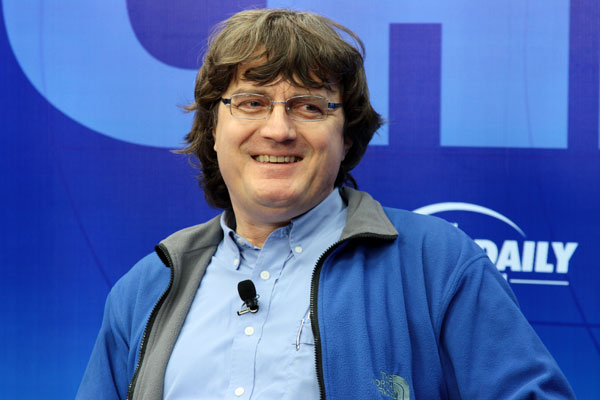Code Download Links:
github Nbody6++GPU
Some References: Kamlah et al. 2022 ;
Wang et al. 2015
Gaseous Model
(Giersz & Spurzem 1994)
(Spurzem 1999)
Astronomisches Rechen-Institut ,
Zentrum für Astronomie der
Univ. Heidelberg ,
Mönchhofstrasse 12-14,
D-69120 Heidelberg, Germany
Phone: +49 89 82080944; Fax: +49-6221-54-1888; Email:
spurzem@ari.uni-heidelberg.de
spurzem@nao.cas.cn
Office Location: mainly home office, sometimes Weberstr. 13, Room W.E-02.
Member of
Astronomische Gesellschaft ,
European Astronomical Society ,
International Astronomical Union
Beijing: National Astronomical Observatories, Chinese Academy of Sciences
A20 Datun Rd., Chaoyang Distr.,
Beijing 100012, China
Contact: spurzem@nao.cas.cn
(Li Shuo) lishuo@nao.cas.cn
Kavli Institute for Astronomy and Astrophysics at Peking University
Main Fields of Research (these link-anchors lead directly to short paragraphs below on this page):
Stellar and Galactic Dynamics ,
Stellar and Planetary Dynamics ,
Direct N-Body Simulations ,
Special Purpose Computing
Participation in SFB881 ``The Milky Way System'', infrastructure project
Z2 with GPU accelerated supercomputer.
Virgo-EGO Scientific Forum

MODEST - Modelling Dense Stellar Systems Internat. Working Group
Dynamics of (globular) star clusters, galaxies and galactic nuclei;
Study of the effects of rotation, mass segregation, primordial
binaries and central massive objects on the evolution of dense stellar
systems. Using
anisotropic gaseous models , direct solutions of the Fokker-Planck equation
and Monte Carlo methods to simulate numerically the
effects of stellar evolution, a realistic mass spectrum, galactic
tidal fields on the evolution of dense young or globular star clusters.
Using particle methods (
SPH =
Smoothed Particle Hydrodynamics, some SPH-links:
St. Andrews ,
Tübingen ) to study the combined evolution of stellar systems and
interstellar matter, e.g. for chemodynamical models of galaxy formation.
Mirek Giersz, Nicolaus Copernicus Astronomical Centre, Warsaw , Monte Carlo models of star clusters with binaries
David Merritt , Andras Szell,
RIT - Rochester Inst. of Technology, New York State, USA ,
Black Holes in Dense Stellar Clusters
Hyung Mok Lee and Eunhyeuk Kim,
Dept. of Astronomy, Univ. of Seoul,
Korea Models of rotating star clusters
Formation of Protoplanets in disks of merging and fragmenting planetesimals,
runaway and oligarchic growth, interaction with disks, based on direct
N-Body simulation models.
The influence of stellar encounters on the evolution of orbital parameters
of planetary systems in star clusters. Participation planned in
DFG Schwerpunkt ("Focused Research Programme" of German Science
Foundation) on
"Extrasolar Planets" .
Collaborations in this field:
Doug Lin ,
Univ. of California
Shigeru Ida ,
Tokyo Institute of Technology
Eiichiro Kokubo ,
National Astronomical Observatory of Japan
MPIA Heidelberg Jens Rodmann
Direct N-body Simulations of collisional star clusters (globulars, young dense, around galactic central black holes) using
NBODY6++ (a download area here )
- a special variant of NBODY6 (a download area here ,
direct force integration programme
originally written by Sverre Aarseth) for massively parallel supercomputers.
Supported platforms include
ALiCE
at the Univ. Wuppertal
(see also the web page of
Thomas Lippert for more information),
or general supercomputers such as
Hitachi SR8000 ,
IBM RS/6000 SP and
CRAY
T3E (in memoriam
Seymour Cray,
new link!),
visualization of the results with
NEMO.
External collaborations in this field with:
Sverre Aarseth ,
Inst. of Astronomy Cambridge
Jun Makino ,
University of Tokyo
Douglas Heggie ,
Dept. of Maths. and Stats. Univ of
Edinburgh
Paolo Miocchi , Roberto Capuzzo-Dolcetta ,
La Sapienza Universita di Roma
We acknowledge supercomputing time at:
HLRS Stuttgart ,
NIC Jülich ,
SSC Karlsruhe
We acknowledge numerous
TRACS research visits supported by the
Edinburgh Parallel Computing Centre.
Other interesting supercomputer centres:
LRZ München ,
ZIB Berlin ,
Hochleistungsrechner Nord (HLRN) .
Participation in the development and astrophysical application of special
purpose computers, in particular
FPGA )
in combination with
GRAPE (the GRACE =
GRAPE +
RACE or
ASPH(E)RIC
project. This research is in cooperation with
Lehrstuhl 5,
Technische Informatik at the
Univ. Mannheim and
the Max Planck Institut für Astronomie
in Heidelberg, and a proposal for another
SFB-Transregio is
in the early planning stage.
GRAPE (=GRAvity
PipE) are extremely fast special purpose machines to compute direct
gravitational forces in N-body simulations. They have been invented and
designed at
Dept. of Astronomy and Dept. of Earth Science and Astronomy
of the College of Arts and Sciences of the
University
of Tokyo ; nowadays GRAPE development is located at
Hongo Campus and
Komaba Campus
of the University of Tokyo .
The collaborators in this project are:
Gerhard
Lienhart ,
Andreas Kugel
,
Reiner Männer ,
Univ. Mannheim
Markus Wetzstein,
Andi Burkert ,
Univ. Observatory Munich
Jun Makino
,
Toshiyuki Fukushige ,
University of Tokyo
Comments or Problems:
For information please email to
spurzem@ari.uni-heidelberg.de , phone +49-6221-54-1830 ,
or FAX your request to +49-6221-54-1888. If you have problems or
comments concerning our WWW service, please send e-mail to the
following address: webmaster@ari.uni-heidelberg.de
Last update of this page: February 2022

 https://orcid.org/0000-0003-2264-7203
https://orcid.org/0000-0003-2264-7203